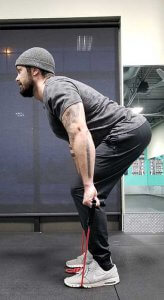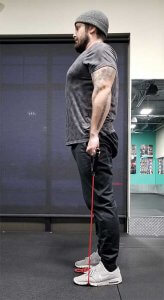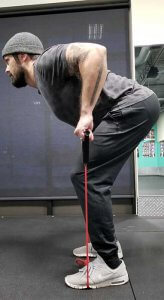Millions of truckers are putting themselves in mortal danger every day, perhaps without even realizing it. The leading causes of death among truckers have everything to do with driving, but little to do with traffic accidents. You’re taking your health and your family’s well-being into your hands when you climb behind the wheel, and we want you to stay safe and happily trucking for years to come.
A working life spent in a sitting position can sure take its toll. Nearly a score of scientific studies conducted over the last two decades, examining a total of over half a million people, have concluded that sitting for extended periods is horrible for human health. Workers who ply their trade from a sitting position are overall 46% more likely to die from all causes.
Truck drivers are at an even greater risk for a few reasons. Mainly, the demands of the job require sitting for even longer periods than a typical office worker—no 15-minute standing micro-breaks per hour when you’re driving under load. Additionally, drivers maintain a different, less healthy seated posture than a desk jockey, as their equipment requires body positions that are unnatural at rest (i.e. not ergonomic). Also, truckers are subject to abnormal types and amounts of job-related stress, including lack of sleep, and performance-based pay incentives that are dependent on many factors out of their control.
If this all looks pretty grim, it should. All in all, obesity, diabetes, heart disease, and other circulatory conditions are the chief enemies of our noble truckers, and truckers are far more likely to die from one of these causes than they are to die in a traffic accident. Fortunately, there’s a lot we can do to not only get healthier and feel better today, but to keep driving healthily on to retirement.
Healthier Habits
According to the National Institute for Occupational Safety and Health (NIOSH), truck drivers are twice as likely to be obese as the average American worker. As one of the leading risk factors for heart disease—the leading cause of death in the developed world—obesity is a literal modern-day epidemic. It’s ironic that we spend untold billions of dollars a year waging wars on drugs, terror, texting while driving, and manifold other things, all while sitting and eating ourselves to death at a rate that, in terms of actual risk, far outpaces all of these dangers combined. The bitterness in this irony is also our saving grace: we have control.
Habits can be hard to break. We didn’t make a decision to have our first heart attack in our 40s, or to leave our families wringing their hands in despair when we’re grounded for health problems. We made a series of small decisions, day in and day out, until we’re left in a place where the next wrong choice is the one that’s easiest, and so we carry on. Thankfully, it’s never too late to start making better choices.
Start Drinking on the Job
When we’ve been running on fumes for days, weeks, or months on end it can be tempting to reach for stimulants like caffeine and sugar to give us a boost. They taste good, and that little bump of energy we get can seem like just the very thing. The main problem is refined sugars, and the unbelievable ways in which they play absolute hell with our metabolism.
There’s a ton of information on this subject, and so we won’t go off on a huge tangent here, except to say that soda and energy drinks are basically poison. If you feel like you absolutely need caffeine in order to live (and if you’ve got a caffeine habit, it literally does feel that way), you’re infinitely better off with unsweetened coffee or tea. Otherwise, water’s what your body is craving more than anything.
Caffeine, too, sets up a vicious cycle in your body because it paradoxically dehydrates you as you consume it by causing your body to excrete more water than you get from consuming caffeinated beverages. When you’re chronically dehydrated, your body can’t properly produce energy from the food you’re consuming, and so you’ll feel run down, and like you could use a cup of joe, thus perpetuating the cycle.
The solution to all of this is to switch to water. You may be tired of hearing it, but there are solid reasons that you hear health skilleds going on and on about it, and it apparently bears repeating: you need to drink more water. Your entire body will thank you for it, and you’ll get to keep a lot more money in your pocket.
Now Walk it Out
It sounds almost stupid, but for an otherwise sedentary human, the health benefits of simply getting up and walking can be tremendous. Americans, in general, tend to truly suck at this. We’re overwhelmingly immobile, both at work and at leisure, and it’s killing us.
For starters, a 200 pound person walking at 3.5 miles per hour (a good walking pace) burns about 120 calories per half hour. Walking also improves circulation, and improves the health of our heart. Further, exercising in any form helps regulate our brain chemistry, improving our energy levels, mood, sleep, digestion, and immune response.
Consider adding a 20-minute spin around the lot to your rest stops. You can take your phone with you and scroll Facebook, make some calls; maybe take your clipboard and do some paperwork. Whatever, as long as you’re walking at a fair pace. Do this three times a day, and you’ve added an hour of exercise and burnt an additional 300–400 calories.
You Aren’t What You Don’t Eat
It’s a lot like grabbing a soda when we’re on the run. Pre-packaged foods and fast food are big hits because they taste good and they’re convenient. And just like soda and energy drinks, these types of foods are a devil’s bargain—we get what we want right now without knowing what the cost is going to be long-term.
Standing in the produce section of the grocery store, imagining a life of kale salads and unseasoned chicken breasts sounds like pure hell. Changing everything about how we eat isn’t only intimidating; it’s impossible. Most people trying to start a diet will make the mistake of drastically changing everything, holding themselves to an impossible standard and laying the sabotage for their new lifestyle before they’ve truly begun. After a few days, they’ve succumb to a craving for some forbidden foodstuff, and they consider their new diet ruined. “What,” they justifiably ask themselves, “is the actual point of prolonging my life if it’s going to be this miserable?”
It doesn’t have to be like this! Just start with a few small things: Order a McBreafkast Muffin with no meat, and save a couple hundred calories, including most of the fat. Cop a bag of apples for the same price as a bag of snack mix, and have snacks for the next three days instead of the next 300 miles. You don’t have to let your diet eat your lunch for a whole bunch of small changes to start to add up to a big difference.
Exercises for a Bum Back
A lot of folks suffer from back pain, and a lot of people reach for good ol’ Ibuprofen when their back is kicking. Over-the-counter pain medicines certainly have their place, but if you’re finding that those pills are a part of your routine diet, you really need to get a grip and go see a doctor. These drugs can be extremely dangerous when used too much, even simply taking them two at a time for extended periods, to the point that a person can end up hospitalized with their digestive system completely trashed.
Making time in your life for exercise is a far superior way of tacking your back pain. Below are a couple of exercises that focus on strengthening the posterior chain (the muscles along the back of the body that help hold us upright when sitting and standing). These, and other, similar movements will go a long way toward offsetting the damage we do by sitting for extended periods of time.
If you’re new to exercising, talk to your doctor before beginning a workout program. Seriously. You don’t want to start in cold and end up on the bench for a month with some totally preventable injury. It’s normal to feel a slight burning sensation as you’re working out, but if you experience a sharp pain at any point, stop what you’re doing immediately.
The two exercises we’re going to present here require simple resistance bands (here’s a set for $24 on Amazon), and enough space to bend forward at the waist and stand up straight.
Romanian Deadlift
The Romanian Deadlift is a good movement for strengthening the hamstrings (the backs of the upper legs), and the thoracic and lumbar regions of the back (everything from the base of the neck to the top of the butt). Performed properly with exercise bands, it is relatively safe.


The Movement
- Start by placing your feet on the resistance band so that the portions of the band on the outsides of your feet are shortened. The shorter the length of band you leave hanging out, the more resistance you’ll have at the top of the motion.
- Bend your knees slightly, and bend forward, keeping your back straight, with your shoulders back and your chest pushed out. Grasp the handles, and let your arms hang straight down naturally.
- While holding the handles, return to a standing position. As you rise, keep your back straight and straighten your legs. At the very top of the movement, let your shoulders drop as you pull them back, and push your hips slightly forward.
- Again, keeping your back straight and your shoulders back, bend your knees slightly as you lean forward until your back is almost parallel with the floor.
How Many?
Remember to go easy on yourself. Ultimately, you should aim for four sets of fifteen movements, but you shouldn’t be struggling at any point.
Bent-Over Rows with Pronated Grip
As a follow-on to the Romain Deadlifts, above, this rowing motion is great for the whole back, and will give your biceps a bit of a workout, too. Remember to take it slow and smooth, and to focus on keeping your back straight through the entire motion.


The Movement
- Begin in the same position described in steps 1 and 2, in the Romanian Deadlift movement, above. Don’t forget to keep your back straight, your shoulders down and back, and your chest out.
- Keeping your elbows tucked, pull the handles back straight through your elbows, squeezing between your shoulder blades at the top of the movement, and hold this position for a count of two before slowly returning to the starting position.
How Many?
Again, four sets of fifteen is a good target. Keep it manageable, as we’re not trying to hurt anyone.





